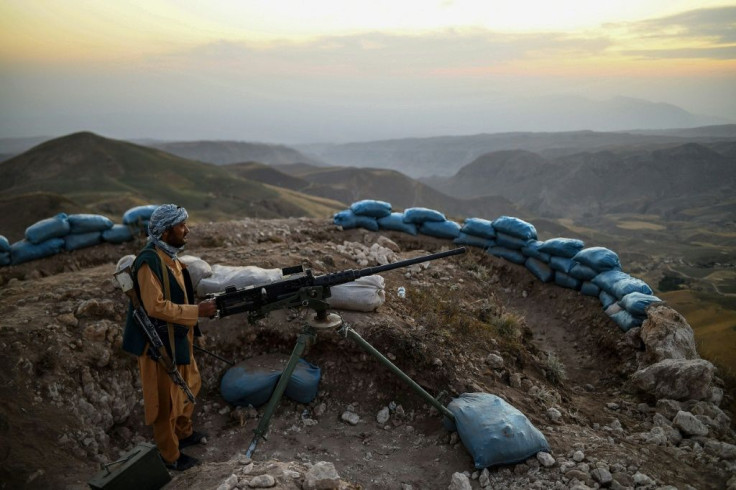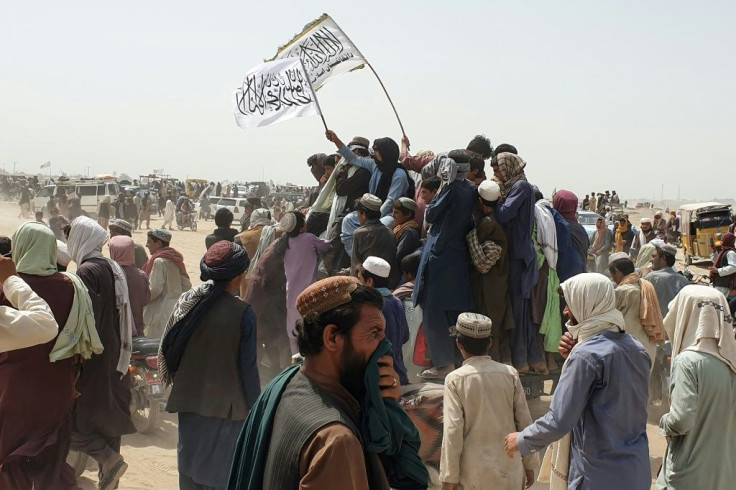Timeline: The Taliban's Sweeping Offensive
The Taliban have taken more than a quarter of Afghanistan's 34 provincial capitals in less than a week as US-led foreign forces pull out of the country. We look at their growing offensive.
In early May, NATO begins a final withdrawal of its mission in Afghanistan involving 9,600 soldiers -- 2,500 of them American.

Intense fighting breaks out between the Taliban and government forces in southern Helmand province and the insurgents capture Burka in northern Baghlan province.
A bomb blast outside a girls' school on May 8 in Kabul kills 85, mostly pupils.
The deadliest attack in a year is blamed on the Taliban, though they do not claim it.
Mid-May, US forces withdraw from the air base in Kandahar, one of the largest in the country.

The insurgents seize districts in Wardak province, 40 km (25 miles) from Kabul, and restive Ghazni, a key province straddling roads connecting Kabul to Kandahar, the second-largest city.
In mid-June, the Taliban capture several districts in the northern provinces of Faryab, Takhar and Badakhshan, forcing the military to retreat from a number of areas.

The Taliban take control of the main Shir Khan Bandar border crossing with Tajikistan, prompting the Central Asian country to check the combat readiness of its armed forces on June 22.
The insurgents seize other routes to Tajikistan, as well as the districts leading to Kunduz, capital of the northern province of the same name, about 50 kilometres from the Tajik border.

Officials on July 2 announce the departure of all US and NATO troops from Bagram, Afghanistan's biggest air base, which served as the linchpin of US-led operations in the country for the previous two decades.
Two days later, the Taliban seize the key district of Panjwai in Kandahar, the insurgents' birthplace and former bastion.

On July 9 the Taliban announce the capture of Afghanistan's biggest border crossing with Iran, Islam Qala.
Two days later Afghan authorities install an anti-missile system at Kabul airport to counter incoming rockets.
On July 14, the insurgents take control of the Spin Boldak border crossing with Pakistan, a key trade route between the two countries.
The Taliban claim on July 22 they control 90 percent of Afghanistan's borders, a figure disputed by the government and impossible to verify.
In a sharp escalation over the first weekend of August, the Taliban offensive focuses on urban centres, with the insurgents attacking at least three provincial capitals -- Lashkar Gah, Kandahar and Herat.
The US and Britain say the Taliban may have committed "war crimes", accusing the insurgents of "massacring civilians" in the town of Spin Boldak.
Eight people are killed on August 3 in a coordinated Taliban-claimed bomb and gun attack targeting the Afghan defence minister and several lawmakers in Kabul.
On August 6, the Taliban shoot dead the head of the Afghan government's media information centre at a mosque in the capital.
The Taliban capture their first Afghan provincial capital, the city of Zaranj in southwestern Nimroz, taking it "without a fight".
The following days several other northern cities fall: Sheberghan, Kunduz, Sar-e-Pul, Taloqan, Aibak, Farah and Pul-e-Khumri.
Despite the bloodshed and sweeping advances, US President Joe Biden gives no suggestion he may delay the withdrawal deadline.
On Wednesday, Afghan President Ashraf Ghani flies to the besieged northern city of Mazar-i-Sharif to rally his forces.
But his visit is overshadowed by the surrender of hundreds of Afghan soldiers in nearby Kunduz, the biggest city to fall so far.
Added to this is the overnight capture of a ninth provincial capital, Faizabad.
© Copyright AFP {{Year}}. All rights reserved.





















